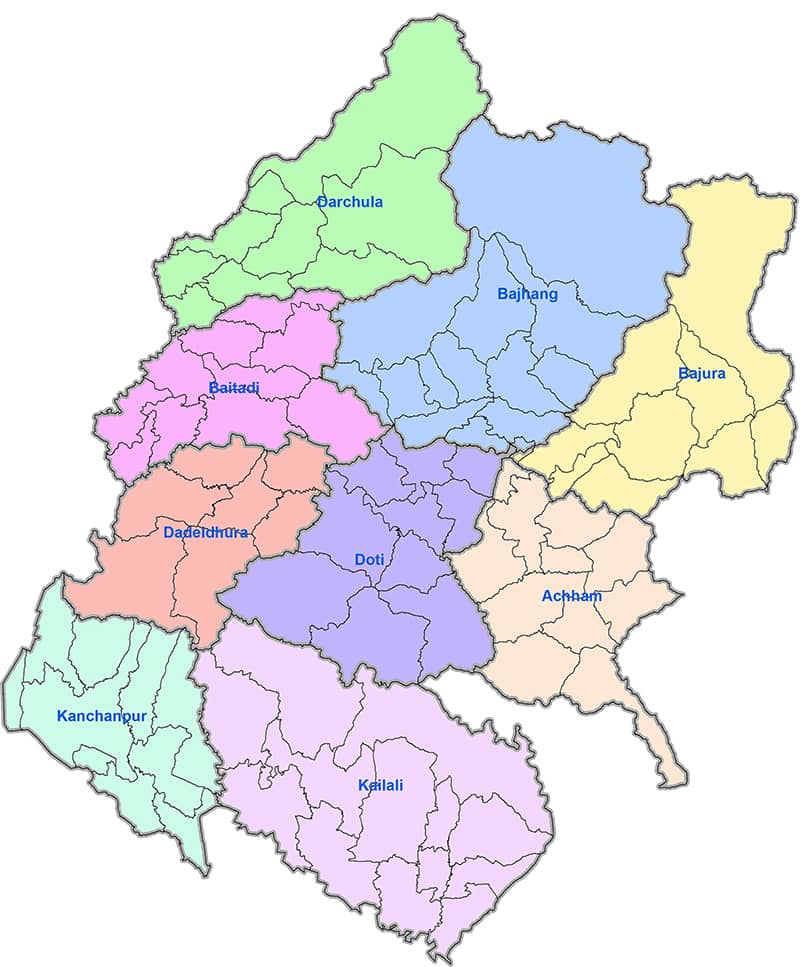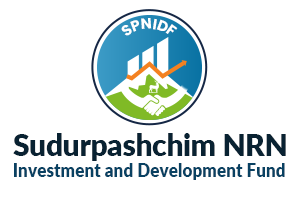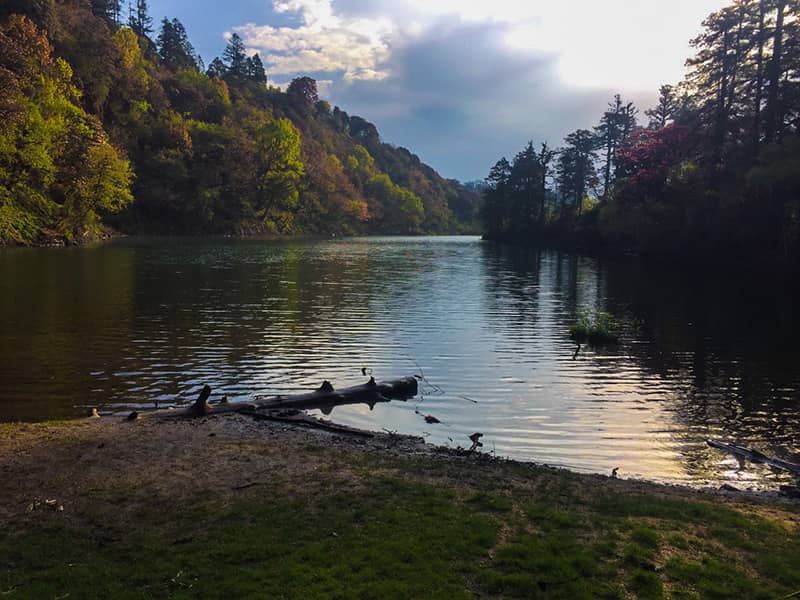Sudurpaschim- Brief Information

Sudurpashchim Province is one of the seven provinces established by the new constitution of Nepal.. It borders the Tibet Autonomous Region of China to the north, Karnali Province and Lumbini Province to the east, and the India's Kumaon to the west and Uttar Pradesh to the south. The province covers an area of 19,539 km2 - about 13.22% of the country's total area. Initially known as Province No. 7, the newly elected Provincial Assembly adopted Sudurpashchim Province as the permanent name for the province. As per the Assembly voting on 28th September 2018, the city of Godawari has been declared the capital of the Province. The province shares similar boundaries with the former Far-Western Development Region, Nepal. The three major cities in terms of population and economy are Dhangadi, Mahendranagar, and Tikapur.
Languages in the Province:
The majority of the population speaks language varieties closely resembling to Nepali language, though not mutually capable of being comprehended. Eastern dialects such as Bajauri and Achhami are closer to the Khas Bhasha spoken in Karnali province. The main dialect in the province is Doteli, spoken in the central part of the province, which gradually gets closer to Kumaoni spoken on the Indian side of the border.
The local Tharu variant has influence from Nepali and the Hindi dialects spoken in the plains to the south across the border. The largest Sino-Tibetan language is Magar, although there are still some speakers of Byangsi in the higher mountain regions near Tibet.
The Language Commission of Nepal has recommended Dotyali and Tharu as official language in the province. Apart from two above, the commission has also recommended Baitadeli, Achhami, and Bajhangi to be additional official languages, for specific regions and purposes in the province.
Ethnic groups in the Province:
The Khas/Chhetri are the largest Indigenous group, making up 44.09% of the population. The Tharu are the second largest, making up 17.15%. Other Khas groups including Hill Brahmin, Kami, Thakuri, Damai, Sarki, Lohar and Sanyasi. There are some Magars as well.







